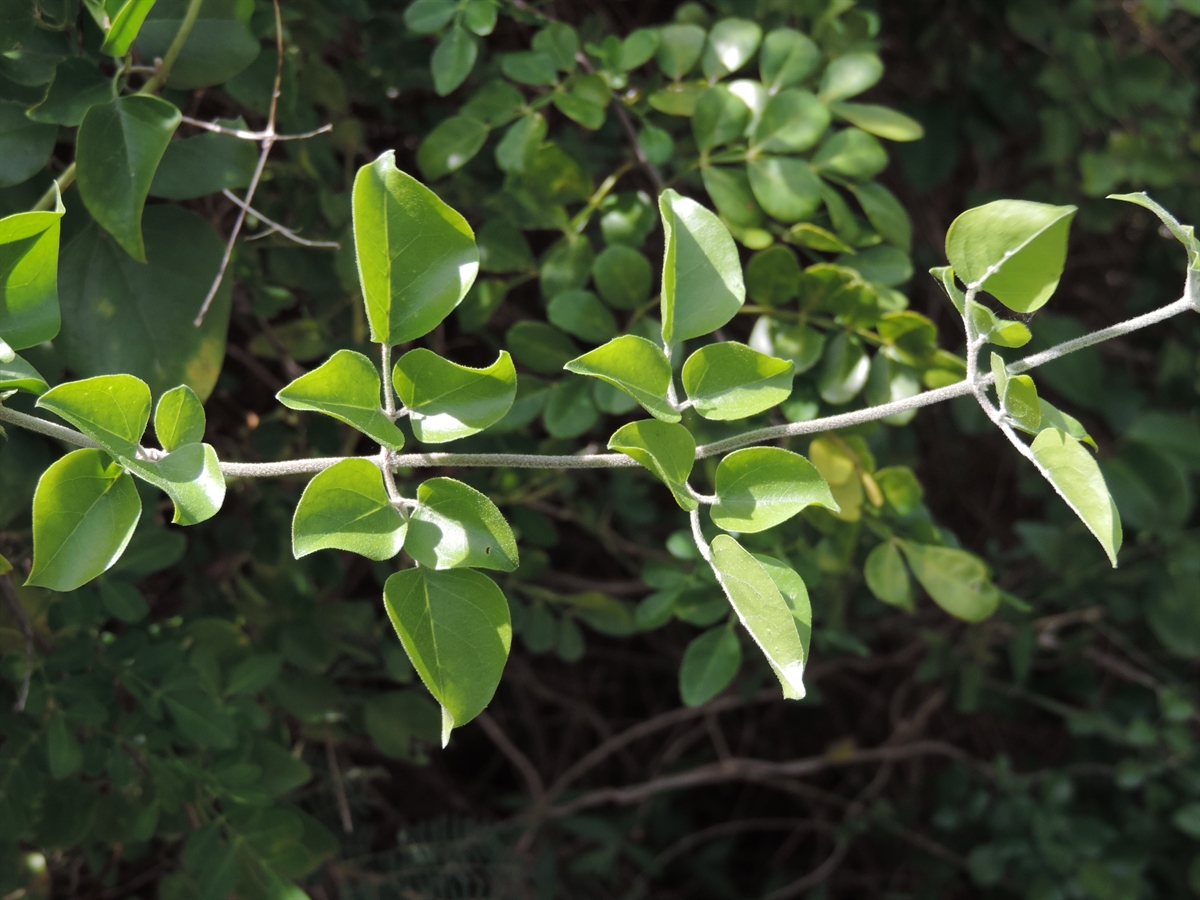Habit: Jasminum fluminense grows as a climbing woody vine up to 15 m in length with pubescent stems and petioles. The trifoliate leaves are arranged oppositely. The leaflets are ovate, up to 7 cm long, with an acuminate/acute leaf apex and an entire leaf margin. The terminal leaflet is larger than the side leaflets. The abaxial surface has groups of pubescence in the axils of the main veins.
The complete, perfect, actinomorphic flowers are in terminal and axillary cymes. The calyx has 5 fused, pubescent, sepals. The corolla has fused white petals that form a long tube with a pubescent throat with 4- 9 lobes. There are 2 stamens that are fused to the corolla. The ovary is inferior with 2 locules with 1 ovule each. There are flowers with long styles and short styles (heterostylous). The fruit is a berry at maturity.
Habitat: Jasminum fluminense grows in Human Altered environments (yards, abandoned fields, roadsides).
Distribution: Jasminum fluminense is NOT native to the Lucayan Archipelago. It is native to Africa and the Arabian Peninsula. It is now a highly INVASIVE species throughout the Caribbean and South America.
Medicinal/Cultural/Economic usage: Jasminum fluminense is not known to be used medicinally in the Lucayan Archipelago.
It has been used as an ornamental vine but has escaped cultivation and is now widespread as an INVASIVE species.


